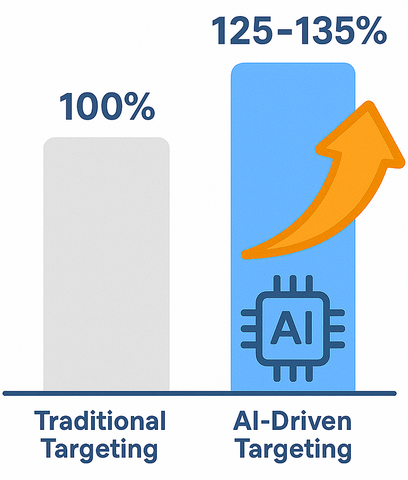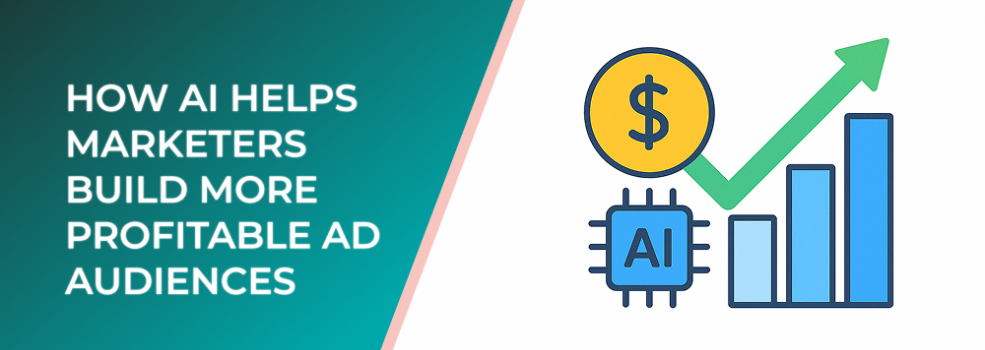Audience building used to be a heavily manual process. Marketers selected interests, behaviors, or demographic traits and hoped the right people would be reached. Today, AI has fundamentally changed how audiences are built, analyzed, and refined.
AI systems now predict who is most likely to convert, analyze thousands of micro-signals, and automatically segment users into higher-value groups. Instead of starting broad and optimizing down, advertisers can start with stronger precision from the beginning.
Why AI-Enhanced Audiences Perform Better
AI improves the full lifecycle of audience modeling by processing patterns too complex for human analysis.
Key advantages include:
-
Identifying high-value behavioral clusters.
-
Finding lookalike traits that humans overlook.
-
Predicting user intent based on historical and real-time signals.
-
Refining segments continuously as new data emerges.
Industry reports show that segmentation informed by AI can increase ROAS by 25 to 35 percent and reduce wasted ad spend by up to 30 percent.
How AI Builds More Profitable Audiences
1. Predictive Conversion Modeling
AI evaluates which users are statistically most likely to take action based on depth of engagement, past behaviors, recent activity patterns, and similarity to known converters.
2. Automated Lookalike Identification
Instead of relying solely on standard demographic or interest-based criteria, AI identifies deeper shared characteristics among high-value customers.
3. Behavioral Clustering at Scale
AI groups users into clusters defined by micro-signals such as product affinity, frequency of interactions, purchase readiness, or content engagement.
4. Real-Time Audience Refreshing
Unlike static audiences, AI-driven audiences adapt instantly to new activity patterns, ensuring marketers stay aligned with shifting behaviors.
5. Intent-Based Targeting
AI identifies intent markers often invisible to manual targeting, improving campaign accuracy and reducing the number of irrelevant impressions.
Useful Statistics to Strengthen Strategy

AI-driven audience targeting can increase return on ad spend by 25–35 percent compared to traditional targeting approaches
-
AI-driven targeting can improve ROAS by 25 to 35 percent.
-
Predictive models can reduce wasted ad spend by up to 30 percent.
-
Advertisers who use AI-driven segmentation report up to 50 percent faster optimization cycles.
-
Behavioral clustering increases conversion likelihood by 20 to 40 percent.
When AI Is Most Effective
AI-based audience modeling is especially useful when:
-
You have large amounts of behavioral or campaign data.
-
Audiences are broad, complex, or rapidly shifting.
-
You run performance-driven campaigns.
-
You manage multiple customer stages or funnel segments.
Limitations Marketers Should Understand
AI is powerful, but not perfect. Some challenges include:
-
Limited visibility into model logic.
-
Dependence on data volume and quality.
-
Potential for over-optimization that reduces reach.
These limitations make human oversight essential. AI provides the patterns; humans provide the context.
Additional Reading
Here are three related articles from the same publication:
Final Thoughts
AI helps marketers build smarter, more profitable audiences by enhancing precision, reducing waste, and improving predictability. When guided by human understanding, AI-driven audience modeling becomes a core driver of ad performance and sustainable growth.

